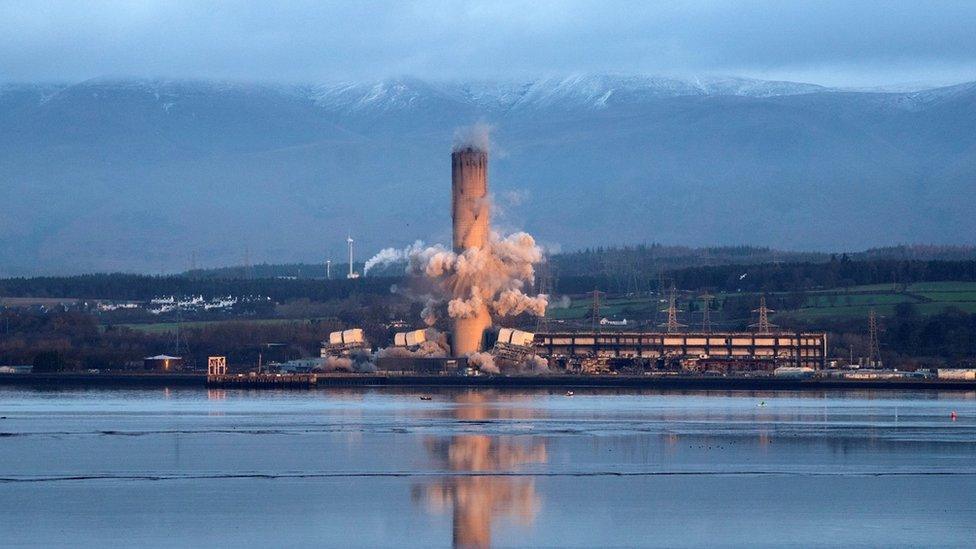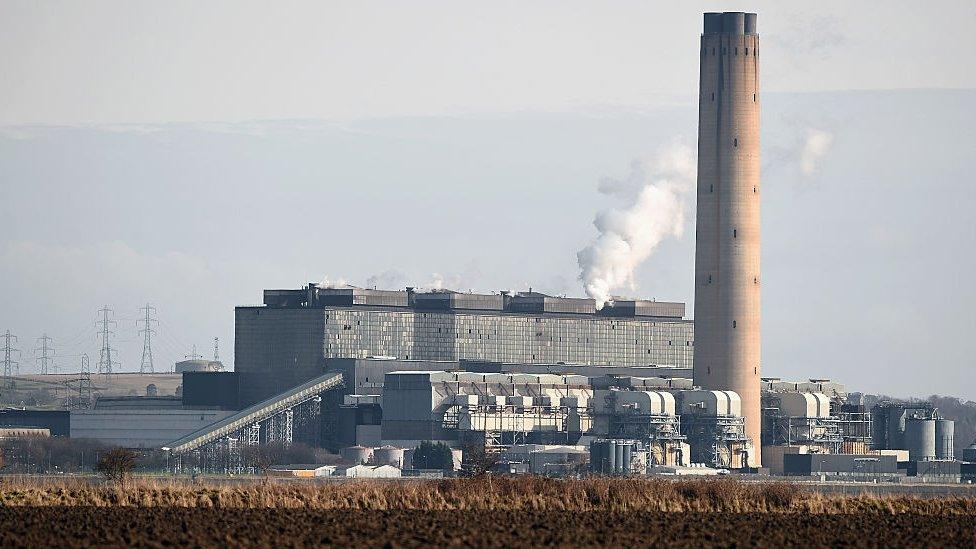What does the future hold for Longannet?
- Published

The chimney at Longannet power station was brought down by controlled explosion
The demolition of the last remaining large structure at Longannet marked a new milestone in the long history of Scotland's last coal-fired power station.
A 600ft (182m) chimney was brought down in a controlled explosion at the Fife site earlier this month, nearly six years after it was shut down.
The 80,000 sq m site is being prepared for redevelopment by Scottish Enterprise and owner Scottish Power - but its future remains unclear.
Two years ago, Fife Council backed plans submitted by Scottish Enterprise for a new train factory at the site.
Spanish train manufacturer Talgo had already announced that it could create up to 1,000 jobs in developing the facility.
But there was a big caveat - it would only go ahead with the factory near Kincardine if it won an initial order to build new trains as part of the controversial HS2 rail link.
Its plans were thrown into disarray when the Madrid-based company lost out after being shortlisted to build 50-odd trains for the new high-speed line. Earlier this month, HS2 signed a £2bn contract with Hitachi and Alstom to build the trains.
Talgo has said on several occasions that it is still committed to Scotland but it has been revising its plans.
A Scottish Enterprise spokeswoman told BBC Scotland: "While it is disappointing that Talgo have not been successful in their bid for the HS2 contract, the company have advised Scottish Enterprise that they remain committed to bringing operations to Scotland and we will support them to do so once we see their revised plans."
However, when asked by BBC Scotland last week for an update on its plans for a train factory at Longannet, Talgo's response stopped short of a firm undertaking.

Talgo specialises in designing and making fast lightweight trains
Talgo UK managing director Jon Veitch said in an emailed statement: "In so far as our plans, what I may say at this time is that we are working on some hugely exciting but currently confidential projects which are reflected in our plans for Scotland, the UK and Ireland."
Mr Veitch gave no indication of when a decision on its revised plans would be made.
Fife Council declined to comment, referring BBC Scotland to Scottish Enterprise.
The government agency said it remained focused on the redevelopment of the site.
A spokeswoman said: "In the meantime we continue to promote Longannet as an attractive proposition for potential investors, all the more so following the collaboration between Scottish Enterprise and Scottish Power to get the site ready for development.
"And we are still working to develop Scotland as an international centre of rail excellence and innovation."
Longannet was once the largest coal-fired power station in Europe. It began generation in 1970 and, at the height of operations, burned coal from around the world including from as far away as Russia and Colombia, as well as from Scottish open-cast mines.
Typically, it consumed four million tonnes of coal per year and at full production could make enough electricity to power two million homes.
Related topics
- Published9 December 2021

- Published18 December 2019

- Published14 November 2018

- Published24 March 2016
